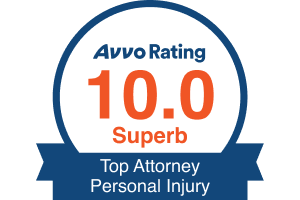Safety Guidelines for Driving in Georgia
While traffic laws cover many aspects of operating a vehicle, they cannot regulate every driving situation that may occur. Therefore, it is important to be familiar with and keep in mind certain safety guidelines, which can help you protect yourself, your passengers, and other drivers on the road.
Driving Through Curves
Even slight curves are potential hazards for drivers, and sharp, blind curves are often the site of numerous accidents. When drivers fail to slow down and maintain their lane during a curve, there is obviously the danger of colliding with a vehicle traveling in the opposite direction. If roads are slick, curves become even more hazardous.
Sharp curves are generally marked with a reduced seed limit sign to make driving through the curve safer. You should reduce your speed before entering curves with reduced miles-per-hour signs. If you realize you are driving too fast after you have already entered a curve, carefully apply your brakes, and continue steering. Do not slam on your brakes, as this can cause you to skid.
Leaving the Roadway in an Emergency Situation
Some emergency situations may force you to leave the roadway to avoid a collision. For example, if a driver does drive too fast through a curve and cross the center line, you may have to swerve to prevent crashing into the speeding car. If your vehicle does leave the road, follow these guidelines:
- Stay calm and take your foot off the gas pedal.
- Maintain a tight grip on the steering wheel and prepare to withstand sudden shocks caused by rocks, debris, and rough terrain.
- Use your brakes carefully, and try to avoid slamming on your brakes.
- To avoid overcompensating, do not attempt to turn back on the road immediately. Jerking the wheel can result in skidding, flipping, or traveling into oncoming lanes of traffic.
- Once your speed is reduced, check for a place to safely return to the road. Be sure to watch for traffic, and merge safely.
Following Too Closely
It is well-known that following too closely frequently causes rear-end collisions. Georgia law requires a driver to not follow another vehicle more closely than what is reasonable under the conditions. While there is no exact formula for what constitutes following too closely, factors that are taken into include the speed of vehicles, the volume of traffic, whether or not there is an intersection, and the distance of a clear view. To avoid following too closely, make note of when the car in front of you passes a street sign or other roadside marker, and count, “one-thousand-one, one-thousand-two.” If you pass the marker before you have finished counting, you are following too closely. In hazardous conditions, including heavy traffic and ice or snow, increase the distance between you and the vehicle in front of you even more.
The converse is also required in that a driver of a leading vehicle should not stop, slow, or otherwise swerve in a manner where those behind him do not have adequate warning.
After a Car Accident, Call the Lawyers at KWF in Atlanta
If you have been injured in a car accident, talk to a lawyer at Katz Personal Injury Lawyers before accepting a settlement offer. You may be entitled to additional compensation for your damages, including property damage, lost wages, medical bills and loss of quality of life. Call our experienced attorneys today at (404) 460-0101.







